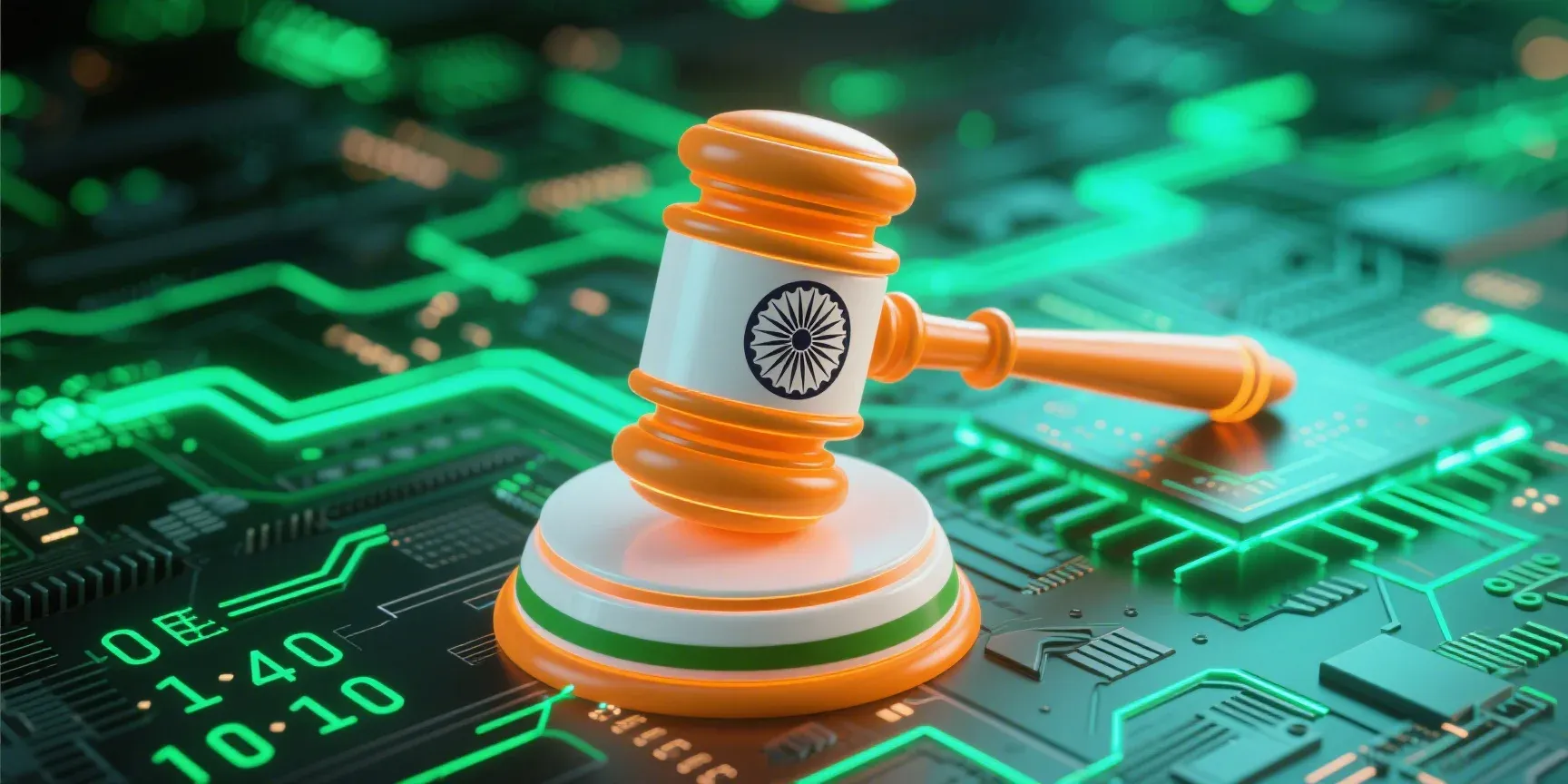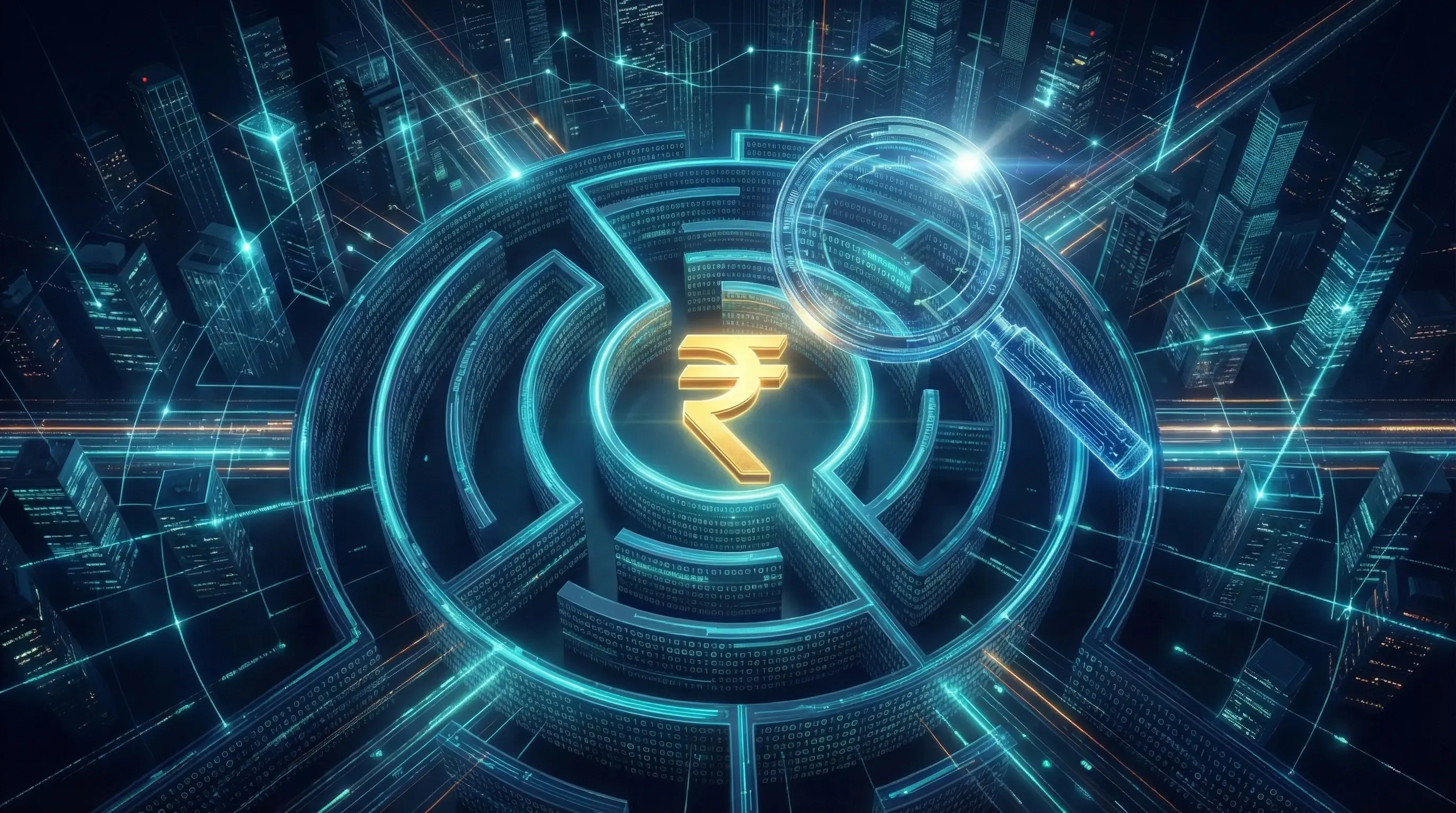
The Information Technology Act, 2000: A Comprehensive Guide to India's Cyber Law
This comprehensive guide to the Information Technology Act, 2000 delves into India's key cyber laws, covering critical offenses and penalties under Sections 66, 66C, 66D, and 67 for cybercrime, identity theft, and online obscenity.
In an era dominated by digital transformation, the Information Technology Act, 2000 (IT Act) stands as India’s cornerstone legislation governing cyberspace. Enacted on June 9, 2000, and brought into effect on October 17, 2000, this Act was a pioneering step to address the legal intricacies of electronic commerce and to combat the rising tide of cybercrime. This article delves deep into the IT Act, 2000, exploring its objectives, key provisions, and the critical sections that define and penalize cyber offenses in India.
The Genesis and Objectives of the IT Act, 2000
The late 1990s witnessed a global surge in internet usage and e-commerce, prompting the United Nations Commission on International Trade Law (UNCITRAL) to adopt the Model Law on Electronic Commerce in 1996. This model law encouraged nations to create a harmonized legal framework for electronic transactions. Following this, India initiated the process of drafting its own cyber law. The Department of Electronics drafted the initial bill in 1998, and after significant deliberations and amendments, the Information Technology Act, 2000 was passed by the Indian Parliament.
The primary objectives of the IT Act, 2000 are:
- To grant legal recognition to electronic records and digital signatures: This was fundamental to fostering trust and growth in e-commerce and digital transactions.
- To facilitate the electronic filing of documents with government agencies: This aimed to promote e-governance and make government services more efficient.
- To provide a legal framework for preventing and penalizing cybercrimes: The Act defines various offenses related to computers and the internet and prescribes punishments for them.
- To amend existing laws: The Act amended the Indian Penal Code, 1860, the Indian Evidence Act, 1872, the Banker’s Books Evidence Act, 1891, and the Reserve Bank of India Act, 1934, to align them with the new digital reality.
The IT Act extends to the whole of India and has extraterritorial jurisdiction, meaning it can apply to offenses committed by any person outside of India if the act involves a computer, computer system, or network located in India.
Key Provisions of the Information Technology Act, 2000
The IT Act, with its 94 sections divided into 13 chapters and four schedules, provides a comprehensive legal structure for various aspects of the digital world. Some of its most significant provisions include:
- Legal Recognition of Electronic Records and Digital Signatures: Chapters III, IV, and V of the Act are pivotal in establishing the legal validity of electronic records and digital signatures, placing them on par with their physical counterparts for most legal and commercial purposes. This has been instrumental in the growth of e-commerce in India.
- Electronic Governance: The Act empowers government agencies to accept the filing of documents, issue licenses, and receive payments in electronic form, thereby fostering a more accessible and efficient system of governance.
- Regulation of Certifying Authorities: To ensure the security and authenticity of digital signatures, the Act establishes a framework for the appointment of a Controller of Certifying Authorities (CCA). The CCA licenses and regulates the functioning of Certifying Authorities that issue Digital Signature Certificates.
- Penalties, Compensation, and Adjudication: Chapter IX of the Act details the penalties for various cyber contraventions and establishes an adjudicatory mechanism. This includes the appointment of Adjudicating Officers and the establishment of the Cyber Appellate Tribunal (now merged with the Telecom Disputes Settlement and Appellate Tribunal) to hear appeals.
- Cyber Security: The Act includes several provisions to enhance cybersecurity in the country. This includes powers for the government to intercept, monitor, or decrypt information in the interest of national security and public order. It also led to the establishment of the Indian Computer Emergency Response Team (CERT-In) to handle cybersecurity incidents.
A Deep Dive into Cyber Offenses: Sections 66 and 67
Chapter XI of the IT Act is dedicated to offenses, with Sections 66 and 67 being particularly significant in defining and penalizing various forms of cybercrime.
Section 66: The Umbrella Provision for Computer-Related Offenses
Section 66 of the IT Act is a crucial provision that penalizes a wide range of computer-related offenses. It states that if any person, with dishonest or fraudulent intent, commits any of the acts specified in Section 43, they shall be punishable with imprisonment for a term that may extend to three years or with a fine up to five lakh rupees, or both.
The key element that elevates a contravention under Section 43 to an offense under Section 66 is the presence of mens rea, or a guilty mind, specifically a “dishonest” or “fraudulent” intention. The acts listed under Section 43 are extensive and cover a broad spectrum of unauthorized activities, including:
- Unauthorized Access: Gaining access to a computer, computer system, or network without the permission of the owner.
- Data Theft: Illegally downloading, copying, or extracting any data, computer database, or information.
- Introduction of Viruses: Introducing or causing to be introduced any computer contaminant or virus.
- Damage to Computer Systems: Damaging or causing damage to a computer, computer system, network, data, or database.
- Denial of Service Attacks: Disrupting or causing the disruption of a computer system or denying access to an authorized user.
- Assisting Unauthorized Access: Providing any assistance to any person to facilitate unauthorized access to a computer resource.
- Tampering with Computer Source Code: Intentionally or knowingly concealing, destroying, or altering any computer source code used for a computer resource with an intention to cause damage.
The Infamous Section 66A: Struck Down but Not Forgotten
The IT (Amendment) Act of 2008 introduced Section 66A, which criminalized the sending of “offensive” messages through communication services. The section penalized sending any information that was “grossly offensive” or had a “menacing character,” or information known to be false for the purpose of causing “annoyance, inconvenience, danger, obstruction, insult, injury, criminal intimidation, enmity, hatred or ill will.”
However, the broad and vague terminology of Section 66A led to its widespread misuse and criticism, culminating in the landmark Supreme Court case of Shreya Singhal v. Union of India (2015).
The Shreya Singhal Verdict: A Victory for Free Speech
In its historic judgment, the Supreme Court struck down Section 66A in its entirety, declaring it unconstitutional. The Court’s reasoning was based on several key grounds:
- Violation of Freedom of Speech and Expression: The Court held that Section 66A was a direct infringement on the fundamental right to freedom of speech and expression guaranteed under Article 19(1)(a) of the Indian Constitution. The restrictions it imposed were not covered under the “reasonable restrictions” permitted by Article 19(2).
- Vagueness and Overbreadth: The terms used in the section, such as “grossly offensive,” “annoying,” and “inconvenient,” were found to be subjective and undefined, leading to the possibility of arbitrary enforcement. This vagueness had a “chilling effect” on free speech, as individuals would be hesitant to express themselves for fear of persecution.
- Lack of a Clear Nexus to Public Order: The Court found that the provision did not have a clear and proximate connection to the maintenance of public order, a key requirement for restricting free speech.
The striking down of Section 66A was a significant victory for civil liberties and digital rights in India, reinforcing the importance of free and open discourse on the internet.
Section 66C: Combating Identity Theft in the Digital Age
Section 66C of the IT Act specifically addresses the crime of identity theft. It penalizes anyone who fraudulently or dishonestly uses the electronic signature, password, or any other unique identification feature of another person. The punishment for this offense is imprisonment of up to three years and a fine of up to one lakh rupees.
The essential elements to prove an offense under Section 66C are:
- The use of another person’s unique identification feature (e.g., password, digital signature).
- The act being done with a fraudulent or dishonest intention.
This section is crucial in protecting individuals from the growing threat of online identity theft and its associated financial and reputational damages.
Section 66D: Punishing Cheating by Personation
Closely related to identity theft is the offense of “cheating by personation,” which is dealt with under Section 66D of the IT Act. This section punishes anyone who, by means of any communication device or computer resource, cheats by pretending to be someone else. The penalty for this offense is imprisonment of up to three years and a fine of up to one lakh rupees.
Section 66D specifically targets the use of technology to impersonate others for malicious purposes, such as financial fraud or defamation. It is a critical tool for law enforcement agencies to tackle online scams and fraudulent activities.
Section 67: Tackling Obscenity in the Electronic Realm
Section 67 of the IT Act deals with the publication or transmission of obscene material in electronic form. It penalizes anyone who publishes or transmits any material that is “lascivious or appeals to the prurient interest or if its effect is such as to tend to deprave and corrupt persons.”
The penalties under Section 67 are stringent and increase for subsequent offenses:
- First Conviction: Imprisonment for a term which may extend to three years and with a fine which may extend to five lakh rupees.
- Second or Subsequent Conviction: Imprisonment for a term which may extend to five years and also with a fine which may extend to ten lakh rupees.
The Act also contains more specific provisions to deal with sexually explicit material:
- Section 67A: Punishes the publication or transmission of material containing sexually explicit acts.
- Section 67B: Deals with the creation, transmission, or possession of child sexual abuse material in electronic form.
These sections underscore the gravity with which the law views the dissemination of obscene and sexually explicit content online.
The Role of CERT-In in India’s Cybersecurity
The Information Technology Act, 2000, under Section 70B, led to the establishment of the Indian Computer Emergency Response Team (CERT-In). CERT-In is the national nodal agency for responding to cybersecurity incidents. Its key functions include:
- Collecting, analyzing, and disseminating information on cyber incidents.
- Forecasting and issuing alerts about cybersecurity threats.
- Coordinating emergency measures for handling cybersecurity incidents.
- Issuing guidelines, advisories, and whitepapers on information security practices.
- Coordinating with international CERTs and other organizations.
CERT-In plays a crucial role in strengthening India’s cybersecurity posture and protecting its critical information infrastructure.
The Future of Cyber Law in India: The Digital India Act
While the IT Act, 2000 has served as a foundational law for over two decades, the rapid evolution of technology has necessitated a more modern and comprehensive legal framework. The Indian government is now in the process of replacing the IT Act with a new Digital India Act. This proposed legislation is expected to address contemporary challenges such as:
- The spread of misinformation and fake news.
- The regulation of artificial intelligence and other emerging technologies.
- The protection of user data and privacy.
- The liability of online intermediaries.
The Digital India Act aims to create a legal framework that is more agile and responsive to the dynamic nature of the digital ecosystem.
Conclusion
The Information Technology Act, 2000 has been a landmark legislation that has shaped the legal landscape of the digital world in India. It provided the initial legal framework for e-commerce, electronic governance, and the prosecution of cybercrimes. While some of its provisions, like Section 66A, have been struck down for being unconstitutional, the Act as a whole has been instrumental in fostering a secure and trustworthy digital environment. As India moves towards a more digitized economy, the evolution of its cyber laws, including the upcoming Digital India Act, will be crucial in addressing the challenges and harnessing the opportunities of the digital age.
Frequently Asked Questions (FAQs)
1. What is the main purpose of the Information Technology Act, 2000?
The main purpose of the IT Act, 2000 is to provide a legal framework for electronic transactions, e-commerce, and e-governance, and to define and penalize cybercrimes in India.
2. Is the Information Technology Act, 2000 still in force?
Yes, the Information Technology Act, 2000 is still in force in India. However, the government is planning to replace it with a new Digital India Act to address contemporary digital challenges.
3. What is the punishment for hacking under the IT Act?
Hacking, which falls under the category of computer-related offenses in Section 66 of the IT Act, is punishable with imprisonment for up to three years, a fine of up to five lakh rupees, or both.
4. Why was Section 66A of the IT Act struck down?
Section 66A of the IT Act was struck down by the Supreme Court in the Shreya Singhal v. Union of India case because it was found to be unconstitutional. The Court held that the provision was vague, overly broad, and violated the fundamental right to freedom of speech and expression guaranteed under the Indian Constitution.
5. What is the difference between Section 66C and Section 66D of the IT Act?
Section 66C deals with identity theft, which is the fraudulent use of another person’s unique identification features like a password or digital signature. Section 66D deals with cheating by personation, which involves pretending to be someone else using a computer or communication device. While related, they address slightly different aspects of online impersonation and fraud.
6. What is the role of CERT-In?
The Indian Computer Emergency Response Team (CERT-In) is the national agency for responding to cybersecurity incidents. It is responsible for collecting and analyzing information on cyber threats, issuing alerts and advisories, and coordinating emergency responses to cyberattacks.
7. Does the IT Act apply to offenses committed outside India?
Yes, the IT Act has extraterritorial jurisdiction. It can apply to any offense or contravention committed outside of India by any person if the act involves a computer, computer system, or computer network located in India.
8. What is considered “obscene material” under Section 67 of the IT Act?
Under Section 67, material is considered obscene if it is lascivious, appeals to the prurient interest, or has a tendency to deprave and corrupt people who are likely to see or hear it.
9. Are digital signatures legally valid in India?
Yes, the IT Act, 2000 provides legal recognition to digital signatures, making them a valid and secure way to authenticate electronic documents.
10. What is the upcoming Digital India Act?
The Digital India Act is a proposed legislation that aims to replace the Information Technology Act, 2000. It is intended to be a more modern and comprehensive law that will address contemporary issues such as artificial intelligence, online misinformation, and data privacy.


